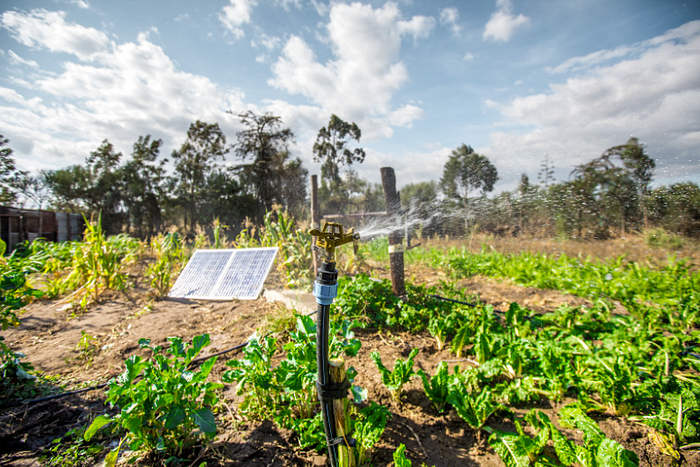Carbon Neutrality Isn’t Easy

At G2 Venture Partners, we invest in transformative technology companies at their inflection points to build a sustainable future. We realize the majority of our climate impact will always be via our support of our portfolio companies, whose products and services reduce carbon emissions by millions of tonnes per year. But in addition, last year we decided to start measuring the carbon emissions associated with our internal operations and purchasing carbon credits to help neutralize the impact (read more here on our rationale and process).
We recently completed this exercise again for 2022, and would like to share our journey in order to help others and stimulate conversation. Part 1 lays out our carbon accounting process, which we did ourselves in Excel, resulting in an estimate of 250 tonnes. Part 2 walks through the many carbon credit options we considered and ruled out, including Sustainable Aviation Fuels and various forestry projects, before settling on SunCulture (avoidance credits via solar water pumps) purchased via Patch.
Part 1 — Carbon Accounting
As with last year, the first step was calculating our carbon footprint. We are in touch with many carbon accounting businesses and are starting to see them add substantial value, especially for larger companies with more complex operations. For our 2022 impact report (which will be published separately), we partnered with Metric to help portfolio companies quantify their carbon footprints. We liked that Metric is reasonably priced and easy to use with an incredibly helpful team. However, for our firm’s internal use case (limited physical footprint, above-average knowledge of the space, willingness to spend quite a bit of time to understand the details) we still did not find any options that cost less than a few thousand dollars (i.e. meaningfully less than the cost of fully offsetting our emissions) that would get us a much more accurate answer or better experience than our DIY solution, so we did the calculation in Excel once again.
In 2021, our approach was to overestimate all of our inputs to ensure we were not under purchasing credits. We also selected a carbon credit provider with a 1000-tonne minimum purchase size, so we had limited incentive to fine-tune our estimates. For 2022 we decided to be more precise with our calculations, as we felt this would give us more data on where our emissions are concentrated and therefore how to improve, and set a more accurate baseline going forward. We still rounded up whenever we were uncertain, and recognize our numbers are all very much still rough estimates.
We once again did a bottom-up calculation, focusing on emissions from four sources that make up the bulk of our direct carbon impact. This includes more than Scope 1 and 2 emissions, but does not encompass all Scope 3 emissions (here is a summary of what is classified as Scope 1, 2, and 3 emissions). We chose these boundaries to focus on the direct day-to-day operations of our firm and employees as that is where we have the most immediate impact, and chose not to include the emissions of our portfolio companies or Limited Partners.
G2 Carbon Emissions Calculation
Flights = 165 tonnes
Calculated by tracking down the number of work-related flights and miles of each G2 employee. Flights booked via our default travel provider Navan (formerly TripActions) came with a carbon emissions estimate that we were able to directly use. For flights booked outside the system, we used an estimate of 2 tonnes for a one-way cross-country business class flight (estimates ranged from 1–2 tonnes, we did not adjust down for the fact that we often do not fly business class).
+
Commute = 26 tonnes
For each employee, we mapped out the length of their commute multiplied by how often they come to the office to calculate their total annual commute miles. In addition, we assumed a once-a-week drive to either the airport or an external meeting. We then applied emissions factors based on whether each individual drives an electric or internal combustion engine vehicle, noting that everyone on our team with an electric vehicle powers their home using renewable electricity (either directly through rooftop solar or via Arcadia).
+
Food = 27 tonnes
From the commute data, we estimated how many days employees were in the office. We applied a 1.5x multiplier to account for guests and employee food while traveling, and assumed on any day in the office employees were eating half their daily food at work. Estimates for the annual carbon footprint of an average American diet ranged from 1–6 tonnes, so we used 6 tonnes in our calculation.
+
Office = 20 tonnes
We got our utility spend from our landlords, ~$8500 for electricity and ~$1700 for gas. At ~50 cents per kWh and $2.3 per therm, this translated to ~17000 kWh and ~740 therms, which converts to <10 tonnes. We also did a top-down check. Our office is 4200 square feet. Last year we used an emissions estimate of 2kg per square foot, which would be similar to our ~10 tonne bottom-up calculation. We also found estimates of up to 9kg per square foot, so doubled our figure to be conservative.
+
Non-food items = 10 tonnes
We added a buffer for non-food items we purchased (e.g. laptops, office supplies), which were minimal this year given we did not move or remodel.
Total = 250 tonnes
As a top-down check, we compared this to estimates we received last year that professional services firms average 11 tonnes per employee per year, and people living in the US average 20 tonnes per person per year (for all their emissions, not just emissions related to work). We averaged 13 employees in 2022, so felt comfortable that our bottom-up number was not an underestimate.
Part 2 — Carbon Offsetting
After completing the calculations, we proceeded to select carbon credits. Last year the decision was made by a small subset of our team deeply immersed in the carbon markets. This year we decided to allow everyone to participate, and held a “pitch competition” where each member of our team could make a recommendation. We provided a number of resources, most notably the marketplace of projects available on Patch, as well as some projects from Anew (formerly Bluesource, which we purchased from in 2021). We also encouraged everyone to think outside the box and were open to ideas such as physical improvements to our operations to directly reduce emissions, or funding a local project that could reduce emissions even if not officially certified.
Two ideas coming out of this exercise that we were particularly interested in pursuing were Sustainable Aviation Fuels (SAFs) and purchasing carbon credits from our portfolio companies. Because the majority of our emissions are from air travel, we wanted to directly reduce those emissions via SAFs. Unfortunately, we were unable to execute this idea, as none of us fly our own planes and we could not find a way to contribute SAFs to the fuel base of commercial flights. If you know how to bring this idea to life, please reach out, as we are very interested in including it in future years.
Several of our portfolio companies are actively reducing carbon emissions via their product or service, and working on formally creating carbon credits. The emissions benefits are already accruing, but the credits are not yet certified. We look forward to being early buyers when they are ready and telling you more about them in future years. Additionally, our portfolio company AiDash (an AI-First vertical SaaS company enabling satellite-powered operations and maintenance) has a product in the carbon credit value chain. AiDash specializes in analyzing satellite imagery to extract valuable insights in a number of sectors. The team offered that if we wanted to choose a forestry-based credit, they could help us monitor the area and ensure our funds were supporting a project we could independently verify.
We looked through all the forestry credits we could find, filtering out projects that:
- Required us to purchase more than ~250 tonnes
- Were more than 5 years old
- Were not registered with either Verra or American Carbon Registry
- Received a BeZero rating of less than A
- Had negative press, even if not carbon related (e.g. pushing locals off their land)
We originally prioritized carbon removal (e.g. planting new trees) rather than avoidance (e.g. not cutting down trees) due to controversy and uncertainties surrounding nature-based emissions avoidance projects. But even after relaxing this constraint we found very few forestry projects that met our requirements, and as we had limited details about these remaining options, we were not confident they were reducing emissions in a permanent and additional manner that met our standards.
This brought us back to the drawing board, i.e. the Patch database of projects. Ultimately we chose to purchase from SunCulture, which designs and finances state of the art solar irrigation systems to mitigate greenhouse gas emissions and assist farmers adapting to changing climate conditions. We were able to speak directly with the team at SunCulture, giving us confidence about the project. 96% of smallholder farmers in Africa depend on rain-fed agriculture, and those that can afford irrigation pumps typically default to diesel / petrol. SunCulture provides a solar alternative (reducing carbon emissions by approximately 3 tonnes per year per pump, independently verified on an annual basis), with additional features that improve upon water efficiency, soil health, land use, and gender equity. Solar pumps typically have a higher upfront cost than fossil fuel pumps, making the initial purchase difficult. Carbon credits reduce this cost, allowing for faster adoption of SunCulture systems and reduced deployment of fossil fuel alternatives. Josephine and Jamleck are two examples of customers whose lives were changed with SunCulture, and who are no longer using petrol pumps. SunCulture estimates that lowering the purchase price by 30–50% can increase the potential customer base from 10% to 50% of the population in relevant communities, making a strong case for the additionality of these credits. The project is already active today and planning to continue on an ongoing basis, so we were able to purchase 250 tonnes of 2022 vintage credits, and will have the option to purchase again in future years if we so choose.

We purchased our credits via Patch, which was a great user experience. They had the largest database we found, with a variety of different options, and an easy platform for a whole team of people to explore the projects. They also allowed us to buy in whatever quantities we wanted, often also with flexibility to choose the vintage. The team at Patch was phenomenal to work with, patiently answering all of our questions. We did end up paying 20% in fees, which felt very reasonable at our small quantity (especially given our lengthy decision-making process with countless questions along the way) but would be more of a question at larger quantities.
Conclusion
Our biggest takeaway from this exercise is that it is incredibly difficult to identify and purchase high-quality carbon credits. Despite being deeply immersed in the space, we struggled to uncover the details of most projects. There is no universal database and no uniform evaluation system, and the landscape continues to evolve. Even after the many hours our team has spent on this process this year, we will likely need to spend many more hours reevaluating in the future, and continue to debate the value of carbon credits. Please reach out if you have any thoughts or suggestions or criticisms, and if you are building a business that can make this process easier — we very much welcome a conversation on this topic, and your ideas for what we should do next year.







